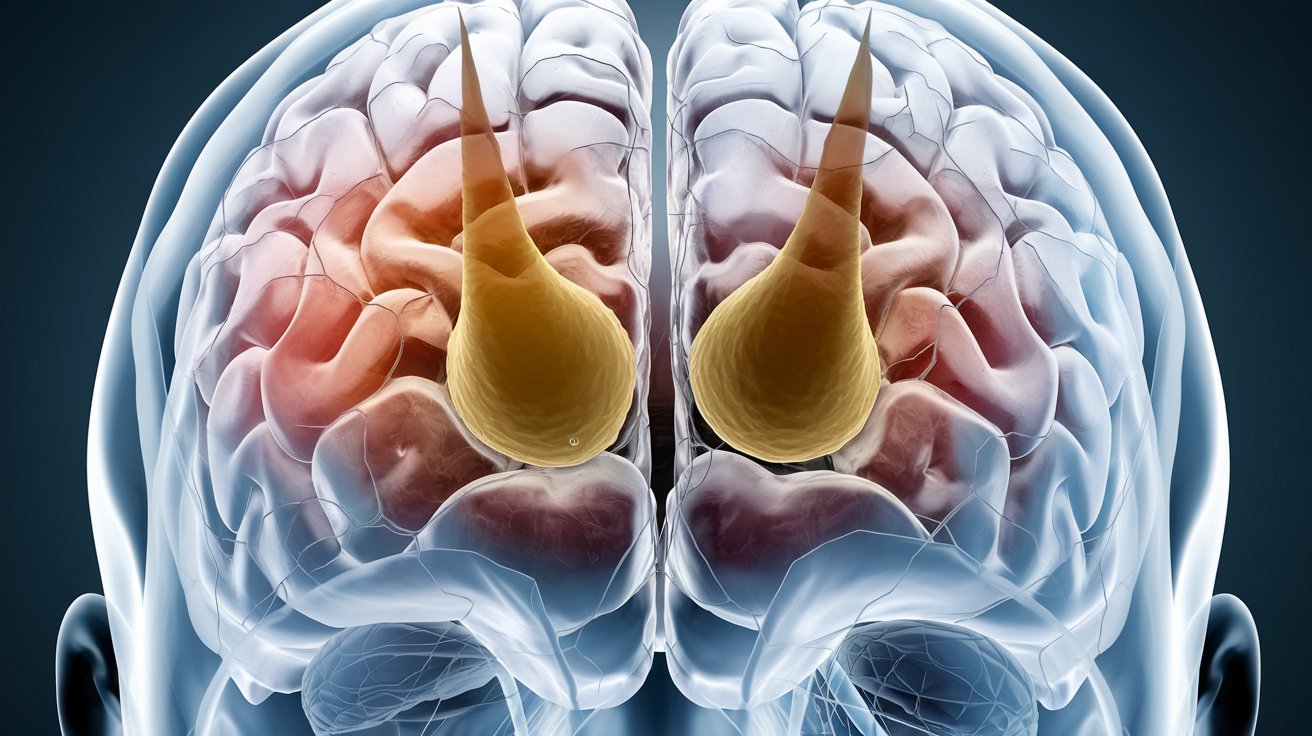
What is Occipital Horn Syndrome (OHS)? Occipital Horn Syndrome (OHS) is a rare genetic disorder that primarily affects males due to its X-linked recessive inheritance. This condition disrupts copper metabolism, leading to various physical and developmental issues. Key features include bony growths on the occipital bone, known as occipital horns, loose skin, and bladder problems. Symptoms can range from skeletal abnormalities to intellectual disabilities. Although there is no cure, treatments focus on managing symptoms and preventing complications. Understanding OHS is crucial for early diagnosis and better management of this complex condition. Let's explore 40 essential facts about OHS to shed light on this rare disorder.
Key Takeaways:
- Occipital Horn Syndrome is a rare genetic disorder affecting copper metabolism, leading to various physical and developmental abnormalities. It primarily affects males and can present with a wide range of symptoms.
- While there is no cure for Occipital Horn Syndrome, treatments focus on managing symptoms and preventing complications. Ongoing research aims to develop better treatments, offering hope for the future.
What is Occipital Horn Syndrome?
Occipital Horn Syndrome (OHS) is a rare genetic disorder that affects copper metabolism, leading to various physical and developmental abnormalities. Let's dive into the key facts about this condition.
-
Definition: OHS is a congenital disorder marked by bony exostoses, especially occipital horns, and connective tissue issues like cutis laxa and bladder diverticula. Central nervous system involvement varies.
-
Prevalence: The exact prevalence is unknown, but about 35 cases have been reported, with nearly all being male.
-
Inheritance Pattern: OHS is inherited in an X-linked recessive manner, mainly affecting males. Females can be carriers but are less likely to be affected unless they inherit two defective X chromosomes.
-
Causes: Pathogenic variants in the ATP7A gene, which encodes a copper-transport ATPase 1, cause OHS. These mutations lead to a deficiency in biliary copper excretion.
-
Allelic Variants: OHS is allelic with Menkes disease, another copper metabolism disorder. However, OHS is generally milder and has a later onset.
Symptoms of Occipital Horn Syndrome
The symptoms of OHS can vary widely, affecting different parts of the body. Here are some of the most common symptoms.
-
Occipital Horns: The most distinctive feature is the presence of bony exostoses on the occipital bone, known as occipital horns.
-
Cutis Laxa: Loose and wrinkled skin, particularly on the hands and feet.
-
Bladder Diverticula: Common in over 80% of patients, often leading to urinary tract infections or frequent urination.
-
Skeletal Manifestations: Exostoses on the tibia and radius, hammer-shaped clavicles, scoliosis, pectus deformity, coxa valga, genua valga, and dislocations of the radial head.
-
Facial Features: Long face, large ears, sagging cheeks, and coarse hair.
-
Vascular Tortuosity: Common in intracranial arteries, posing a risk for aneurysm formation.
-
Dysautonomia: Inability to regulate parts of the nervous system, leading to symptoms like postural orthostatic hypotension, temperature instability, and chronic diarrhea.
-
Intellectual Disability: About half of all patients have intellectual disability, ranging from mild to severe.
Age of Onset and Initial Presentations
OHS can present at different ages and with various initial symptoms, making early diagnosis challenging.
-
Age of Onset: The age of onset ranges from infancy to childhood. Initial clinical presentations may include cephalhematoma, loose and wrinkled skin, and umbilical or inguinal hernias.
-
Initial Presentations Leading to Diagnosis: Common initial presentations include neurological symptoms, developmental delay, hypotonia, connective tissue manifestations, and urogenital symptoms.
Diagnostic Criteria and Genetic Testing
Accurate diagnosis of OHS is crucial for proper management and treatment. Here are the key diagnostic criteria and the role of genetic testing.
-
Diagnostic Criteria: Diagnosis is primarily based on clinical presentation and genetic testing. The presence of occipital horns, cutis laxa, and bladder diverticula are key diagnostic features.
-
Genetic Testing: Genetic testing for pathogenic variants in the ATP7A gene is crucial for confirming the diagnosis. This test can identify missense, frameshift, and splice variants associated with OHS.
Treatment Options and Prognosis
While there is no cure for OHS, various treatments can help manage symptoms and improve quality of life.
-
Treatment Options: Treatment focuses on managing symptoms and preventing complications. This may include copper-histidine injections, droxidopa for dysautonomia, and monitoring for vascular issues.
-
Prognosis: The long-term natural history of OHS is not well understood. Some patients have died suddenly due to respiratory failure, aortic aneurysm, or intracranial hemorrhage. However, one patient has survived to age 57.
Complications and Research
OHS can lead to various complications, and ongoing research aims to develop better treatments.
-
Complications: Complications include aortic aneurysms, intracranial hemorrhage, respiratory failure, and dysautonomia-related issues.
-
Research and Development: Research is ongoing to develop gene therapies for OHS. The NIH and Cyprium Therapeutics are working on an Adeno-Associated virus gene therapy named AAV-ATP7A.
-
Gene Therapy: The AAV-ATP7A gene therapy aims to restore normal copper metabolism by delivering a functional copy of the ATP7A gene. This therapy is still in the pre-clinical stage but holds promise for future treatment options.
-
Orphan Drug Designation: The FDA has granted orphan drug designation to AAV-ATP7A, recognizing the significant unmet medical need for effective treatments in OHS.
Variability in Symptoms and Presentation
OHS symptoms can vary widely among affected individuals, making each case unique.
-
Clinical Presentation in Females: While OHS primarily affects males, females can be carriers and may exhibit mild symptoms. In rare cases, females can be affected if they inherit two defective X chromosomes.
-
Variability in Symptoms: Symptoms can vary widely among affected individuals. Some patients may primarily present with central nervous system involvement, while others may present with skeletal or connective tissue manifestations.
-
Age of Presentation: OHS typically presents in early to middle childhood. However, some patients may not be diagnosed until later in life due to the mild nature of the symptoms.
Detailed Skeletal and Connective Tissue Manifestations
OHS affects the skeletal system and connective tissues in various ways. Here are the detailed manifestations.
-
Skeletal Manifestations: Includes occipital horns, exostoses on the tibia and radius, hammer-shaped clavicles, scoliosis, pectus deformity, coxa valga, genua valga, and dislocations of the radial head.
-
Connective Tissue Manifestations: Includes cutis laxa, bladder diverticula, skin redundancy on the belly, and hyperextensible skin.
-
Vascular Tortuosity: Common in intracranial arteries and can also affect cervical, splenic, and splanchnic circulation, posing a risk for aneurysm formation and aortic root dilatation.
-
Dysautonomia: Characterized by an inability to regulate parts of the nervous system, leading to symptoms like postural orthostatic hypotension, temperature instability, and chronic diarrhea.
-
Intellectual Disability: About half of all patients with OHS have intellectual disability, which can range from mild to severe.
-
Muscle Hypotonia: Muscle hypotonia is a common feature, leading to delayed motor development and unusual clumsiness. Distal motor neuropathy has been recorded in at least one patient.
-
Joint Hypermobility: Joint hypermobility is another manifestation, contributing to the overall musculoskeletal symptoms. This can lead to joint pain and other musculoskeletal complications.
Additional Features and Complications
OHS can also present with various additional features and complications that require careful management.
-
Trichoscopy Findings: Trichoscopy may show pili torti, a characteristic hair abnormality seen in patients with OHS.
-
Skin Features: The skin is often hyperextensible and soft with fine wrinkling on the hands and feet. Skin redundancy is remarkable on the belly.
-
Facial Features: Facial features become distinctive with age and include a long face, large ears, sagging cheeks, and coarse hair.
-
Central Nervous System Involvement: Symptoms can include hypotonia, developmental delay, seizures, and other neurological manifestations.
-
Bladder Diverticula: A common feature affecting more than 80% of patients, often leading to recurrent urinary tract infections and frequent urination.
-
Urinary Tract Infections: Frequent complication of bladder diverticula. Regular monitoring and management are essential to prevent these infections.
-
Skeletal Dysplasia: Characterized by deformities of the bones, including hammer-shaped lateral ends of the clavicles and abnormalities of the hips and pelvis.
Understanding Occipital Horn Syndrome
Occipital Horn Syndrome (OHS) is a rare genetic disorder that messes with copper metabolism, leading to a range of physical and developmental issues. It’s inherited in an X-linked recessive manner, mainly affecting males. Key symptoms include bony exostoses called occipital horns, loose skin, bladder diverticula, and various skeletal abnormalities. Diagnosis hinges on clinical presentation and genetic testing for ATP7A gene mutations. While there’s no cure, treatments focus on symptom management, like copper-histidine injections and physical therapy. Research into gene therapies, such as AAV-ATP7A, offers hope for future treatments. Understanding these 40 facts about OHS helps in recognizing, diagnosing, and managing this complex condition, potentially improving the lives of those affected. Continued research and awareness are crucial for better outcomes.
Frequently Asked Questions
Was this page helpful?
Our commitment to delivering trustworthy and engaging content is at the heart of what we do. Each fact on our site is contributed by real users like you, bringing a wealth of diverse insights and information. To ensure the highest standards of accuracy and reliability, our dedicated editors meticulously review each submission. This process guarantees that the facts we share are not only fascinating but also credible. Trust in our commitment to quality and authenticity as you explore and learn with us.


